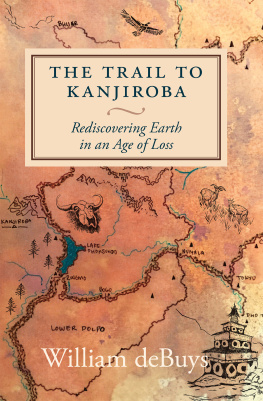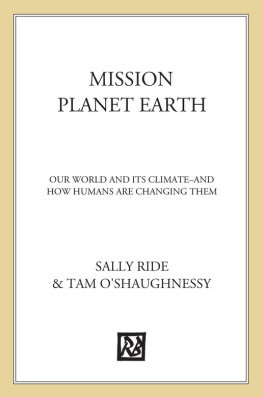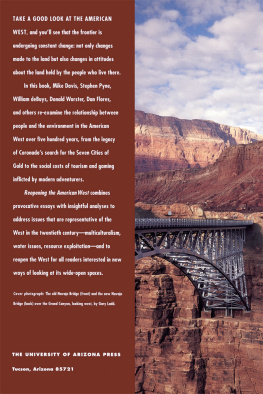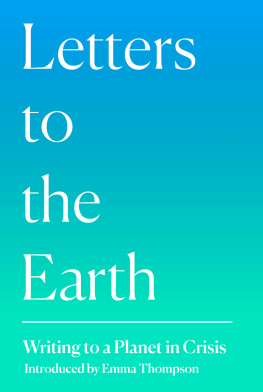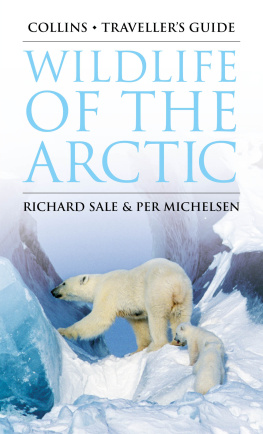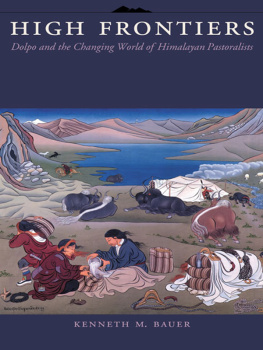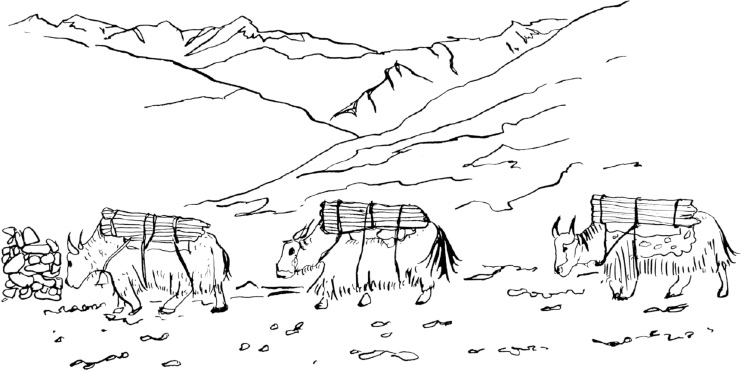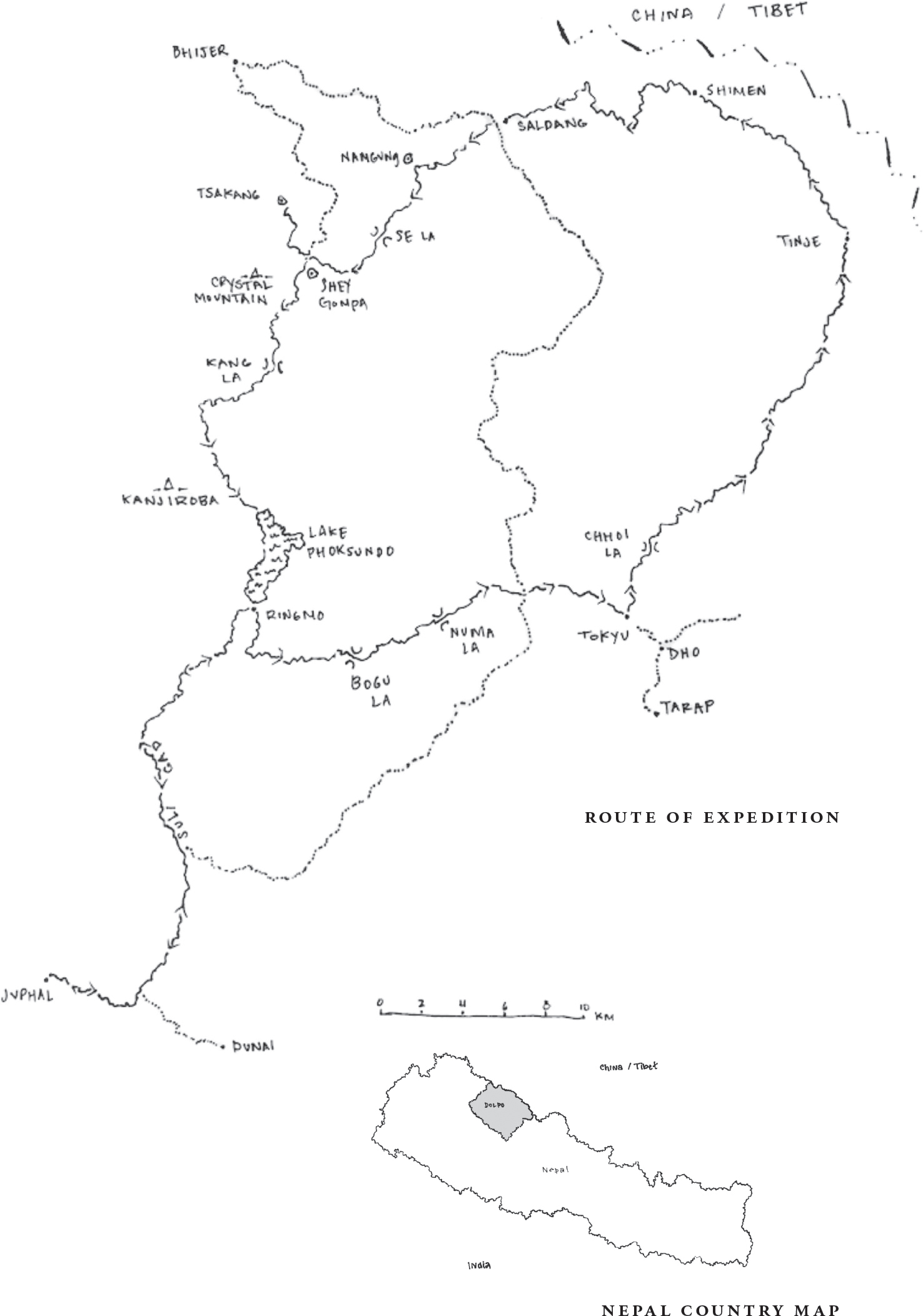The Trail to Kanjiroba
Rediscovering Earth in an Age of Loss
william de buys
with illustrations by
rebecca gaal
Seven Stories Press
Oakland New York London
a seven stories press first edition
Copyright 2021 by William deBuys
Illustrations 2021 by Rebecca Gaal
All rights reserved.
No part of this book may be reproduced,stored in a retrieval system, or transmitted in anyform or by any means, including mechanical, electronic,photocopying, recording, or otherwise, without theprior written permission of the publisher.
Seven Stories Press
140 Watts Street
New York, NY 10013
www.sevenstories.com
College professors and high school and middle school teachers may order free examination copies of Seven Stories Press titles.
To order, visit www.sevenstories.com or send a fax on school letterhead to (212) 226-1411.
Library of Congress Cataloging-in-Publication Data
Names: DeBuys, William, 1949- author. | Gaal, Rebecca, illustrator. Title: The trail to Kanjiroba : rediscovering Earth in an age of loss / William deBuys ; with illustrations by Rebecca Gaal.
Description: Seven Stories Press first edition. | Oakland : Seven Stories Press, 2021. | Includes bibliographical references and index.
Identifiers: LCCN 2021016594 (print) | LCCN 2021016595 (ebook) | ISBN 9781644210642 (hardcover) | ISBN 9781644210659 (ebook)
Subjects: LCSH: DeBuys, William, 1949---Travel--Nepal--Dolp. | Natural history--Nepal--Dolp. | Medical expeditions--Nepal--Dolp. | Environmental ethics. | Climatic changes--Psychological aspects. | Dolp (Nepal)--Environmental conditions. | Dolp (Nepal)-- Description and travel.
Classification: LCC QH193.N4 D43 2021 (print) | LCC QH193.N4 (ebook) | DDC 508.5496/6--dc23
LC record available at https://lccn.loc.gov/2021016594
LC ebook record available at https://lccn.loc.gov/2021016595
Book design by Stewart Cauley and Beth Kessler
Printed in the USA.
9 8 7 6 5 4 3 2 1
for Nomads past and future
And the fear of you and the dread of you shall be upon every beast of the earth and upon every fowl of the air, upon all that moveth upon the earth, and upon all the fishes of the sea; into your hand they are delivered.
Genesis 9:2
My genes look out on an ancient landscape... I am a beast born of interaction with environmental complexity, and to strip me of that complexity is to render me colorblind, deaf, and tasteless.
DAN JANZEN
My God is the God of Walkers. If you walk hard enough, you probably dont need any other God.
BRUCE CHATWIN
I am watching ruin, and yet savoring life. I am complete.
CHARLES BOWDEN
Introduction
YEARS AGO I wrote a book about climate change, and shortly after that, another book about a beautiful long-horned animal, the saola, one of the rarest large mammals on Earth, which was sliding toward extinction. This book is a continuation of the journey begun by the other two, a further look into dilemmas posed by human transformation of the planet. The subject is fraught with gloomy details, but let me quickly say that those details are not the focus here. This book is about preserving ones sense of joy. It is about finding grace amid the grief.
When the earlier books about climate change and extinction came out, I gave a lot of public presentations. I also talked with fellow writers and researchers. All of us had the too-frequent experience of sensing that our audiences shut down, that the news from the front lines of environmental change exceeded what people could take in. Of course, the fault may have been our own. Maybe we were not deft enough as storytellers. Even so, the problem of too much bad news remains. As some psychologists put it, people may have a finite pool of worry, which, once its filled, has no room for more.
More recently, the worlds collective pool of worry has overflowed with urgent concern about the coronavirus pandemic and the economic dislocations it has produced. We have lived amid an onslaught of illness and suering. None of us can be immune to the temptation to give up or grow numb in the face of nearly continuous bad news. Yet the hard work of Earthcare and social progress must continue. The two are linked and also frequently in conflict. Just treatment of land and wildlife cannot exist without justice for the people who depend on that land. Trouble is, a balance between using the land and protecting it can be exceedingly hard to find. Too often those balances result in the continued, albeit slowed, diminishment of wild nature. The hard work of implementing better alternatives and surer strategies never ceases. A further factor has now entered an already complex mix: the world has become better apprised that security from future pandemics cannot be assured without securing stability for the planets richest reserves of biodiversity. Sixty percent of infectious diseases are zoonotic: they have jumped to humans from other animals. As David Quammen writes, Ecological disturbance causes diseases to emerge. Shake a tree and things fall out.
At least for me, the situation is paradoxical. My work has taken me to badly disturbed environments where losses are high and prospects for improvement slim. But most of these places have also overflowed with beauty. They have fundamentally changed how I see the world. Studying the climate system has had a similar eect, revealing the complexity of the natural world in new and deeper ways. These experiences have been like arrows from a peculiar kind of Cupid, deepening my awe for the planet.
In the past two centuries our understanding of Earth has approached omniscience. Think of it: we now know how the planet formed, how the continents have moved, how species, including our own, evolved into their present forms. We can finally describe our place in the universe in realnot magicalterms. Certainly there is much that still escapes us, not least in the complexity of ecological systems, and there will always be more to explore, more to learn, such is the inexhaustible variety and intricacy of the world. But the main lineaments of the story that birthed us, the trunk and principal branches of the tree of life to which we belongthese things are known to us with a clarity and depth undreamt by our predecessors. Yet, even as we learned to read the biography of Earth, we have gone far in shredding its most glorious chapter, reducing biodiversity to a degree unknown since the extinction of the dinosaurs. Climate change will accelerate those losses, while producing massive problems of its own. Perhaps the greatest paradox of our time is that, having attained godlike insight, we plow ahead into calamities of our own making.
This book probes that paradox and takes the form of a four-part exploration. One part is physical: in 2016 I joined a five-week, one-hundred-forty-mile medical expedition, in a remote corner of Nepal, hard against the border of Tibet, a land known as Upper Dolpo. Our group, the Nomads Clinic, delivered primary medical care to people who rarely, if ever, see a clinician. I returned to Dolpo with the Nomads Clinic in 2018 for a similar trek in adjacent territory.

